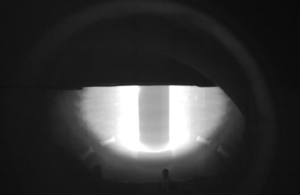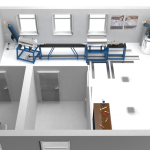A flash of purple plasma followed by applause echoing over a video connection: on 29th October, the UK’s new fusion device MAST Upgrade officially commenced operation. EUROfusion asked experts from around Europe about their involvement in this new fusion experiment.
A cored apple is the favorite image that the British fusion researchers at UKAEA love to conjure for their main experiment MAST Upgrade. At 50 to 100 million degrees Celsius for even the initial experiments, it has to be the hottest apple in the universe! But then, fusion devices have to recreate the process at the heart of the sun. To release energy from hydrogen atoms sticking together in a super-hot, charged gas (plasma) you need temperatures of 150 million degrees Celsius.
The result of a seven-year upgrade programme of UKAEA’s Mega Ampere Spherical Tokamak, MAST Upgrade is essentially a completely new machine. The 3-meter-wide device – bigger than an Airbus A380 engine – now features stronger magnets, extra instrumentation to follow and control the seething plasma within, increased heating power in the form of stronger neutral beam injectors and the capability to make its plasma discharges longer, up to 5 seconds.
EUROfusion Programme Manager Tony Donné: “Warm-hearted congratulations to the MAST Upgrade team on behalf of the EUROfusion community. We are looking forward to the scientific results from this machine with its super-long divertor leg, which will give important guidance to ITER and DEMO.”
Fusion researchers throughout Europe followed MAST Upgrade’s first plasma discharge via remote video connection. The spherical tokamak’s thin centre column is different than the workhorse donut-shape of mainstream devices like JET and ITER, but the European fusion community considers it a worthwhile alternative to explore on its Roadmap to Fusion Energy. UKAEA thinks the compact design may hold the key to small and affordable future fusion power plants.
UKAEA CEO Prof Ian Chapman said: “Fusion is coming and MAST Upgrade will take us closer to bringing plentiful, cleaner energy to people around the world. This experiment will break new ground and test technology that has never been tried before. MAST Upgrade ensures the UK is in the premier league of countries working on fusion – and it will be vital in achieving UKAEA’s goal of building the STEP fusion power plant by 2040.”
Super X: sitting on the surface of the Sun
MAST Upgrade’s crown jewel has to be its complex new divertor or exhaust, designed to efficiently cool outflowing plasma and protect the exhaust wall. Typically the inner walls of a tokamak are protected from the super-hot plasma contained inside by magnetic fields. The exception is the divertor, which has to survive temperatures and particle impacts only seen on the surface of the Sun. MAST Upgrade was designed to try out new ways of cooling the hot plasma before it touches and erodes the divertor during a normal plasma exhaust process.
To cool the plasma, new magnetic coils near MAST Upgrade’s divertor will shape and stretch the exhaust stream into exotic shapes like the stretched Super X or multipronged Snowflake. These give the plasma more time and space to radiate away energy before it finally reaches the divertor wall. By reducing the wear and tear on the divertor, this technique is expected to result in longer lifetimes for future fusion power plants.
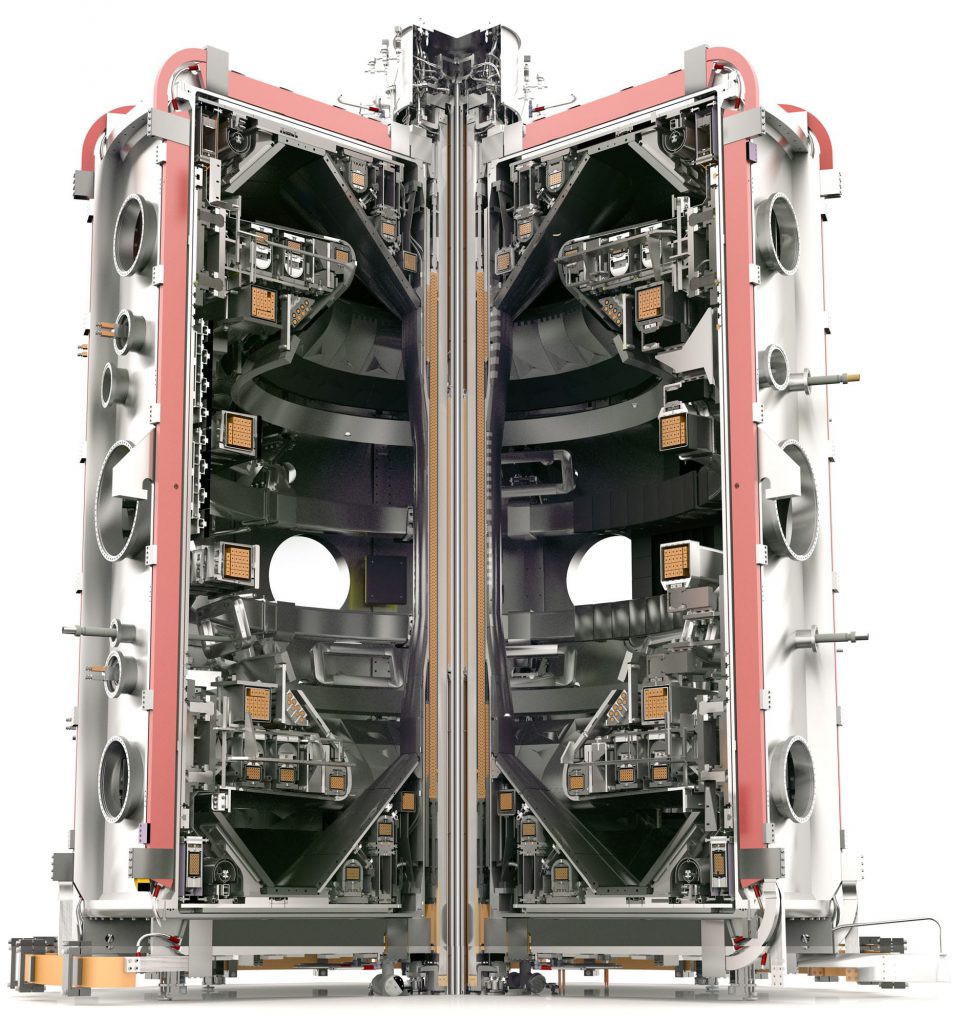
Cutaway illustration of MAST Upgrade. Copyright: UKAEA
Small, flexible machines
“The design of a spherical tokamak lets you get the same level of plasma confinement with a much smaller magnetic field”, explains UKAEA media manager Nick Holloway over Skype. “If we get this right, we’ll have another possible design for a fusion power plant.” At the same time, MAST Upgrade is similar enough to mainstream tokamaks that results can be easily transferred between them.
“These tokamaks all have their own specialties and unique insights they can deliver,” says Sara Moradi. A plasma physicist with an MBA, she coordinates EUROfusion’s research programme for Medium Sized Tokamaks like MAST Upgrade, ASDEX Upgrade (IPP, Germany), TCV (SPC, Switzerland) and WEST (CEA, France). The smaller devices may not reach the high temperatures of the larger JET or ITER tokamaks, but nevertheless they play an important role as testing platforms. Moradi: “Because they’re smaller, these setups are inherently more flexible, cheaper and quicker to modify. You can upgrade them in ways that are just not as feasible for a bigger machine.”
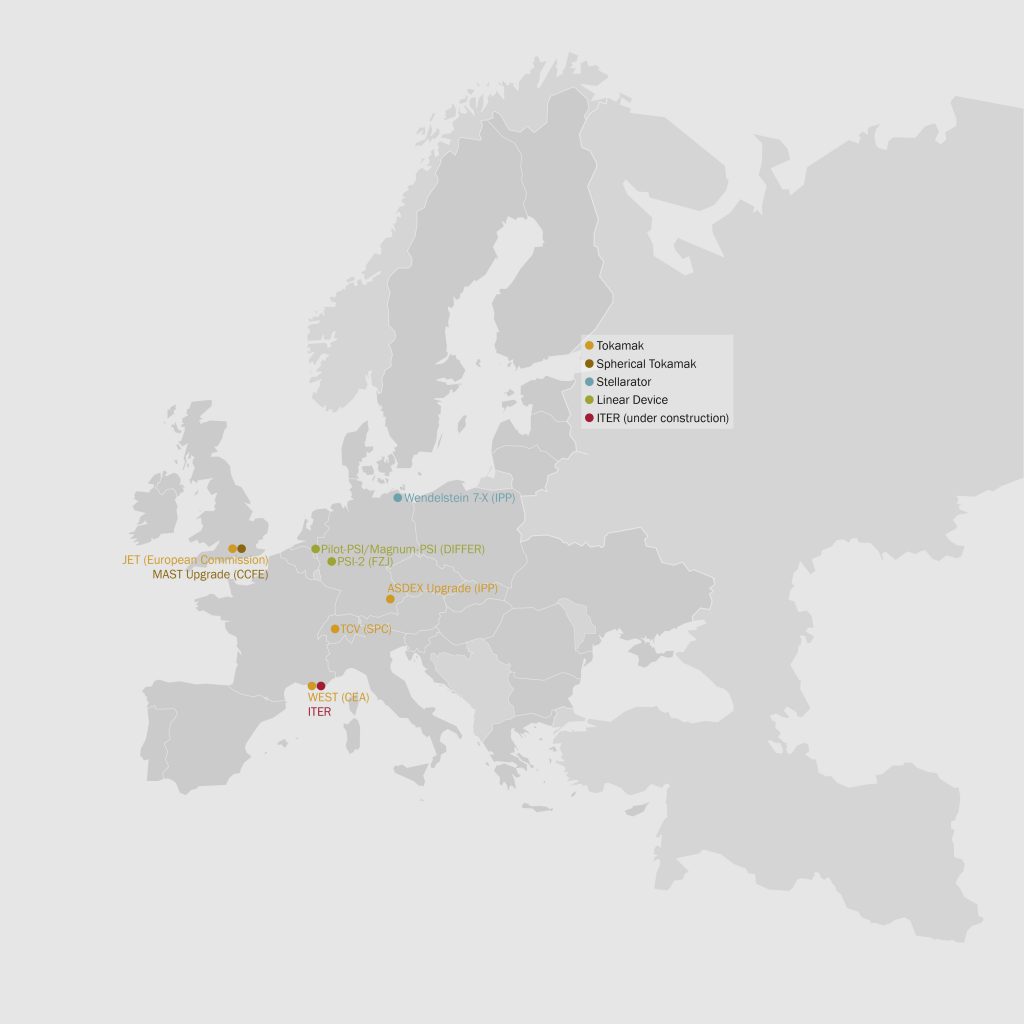
Map of all European fusion experiments
European collaboration
Although MAST Upgrade is a UK project, there is a big contribution from European fusion scientists.
“MAST Upgrade is practically a new fusion device”, says diagnostics expert Dániel Dunai at the Hungarian Centre for Energy Research (Energiatudományi Kutatóközpont). He is one of the many European fusion scientists contributing to the UK’s MAST Upgrade project.
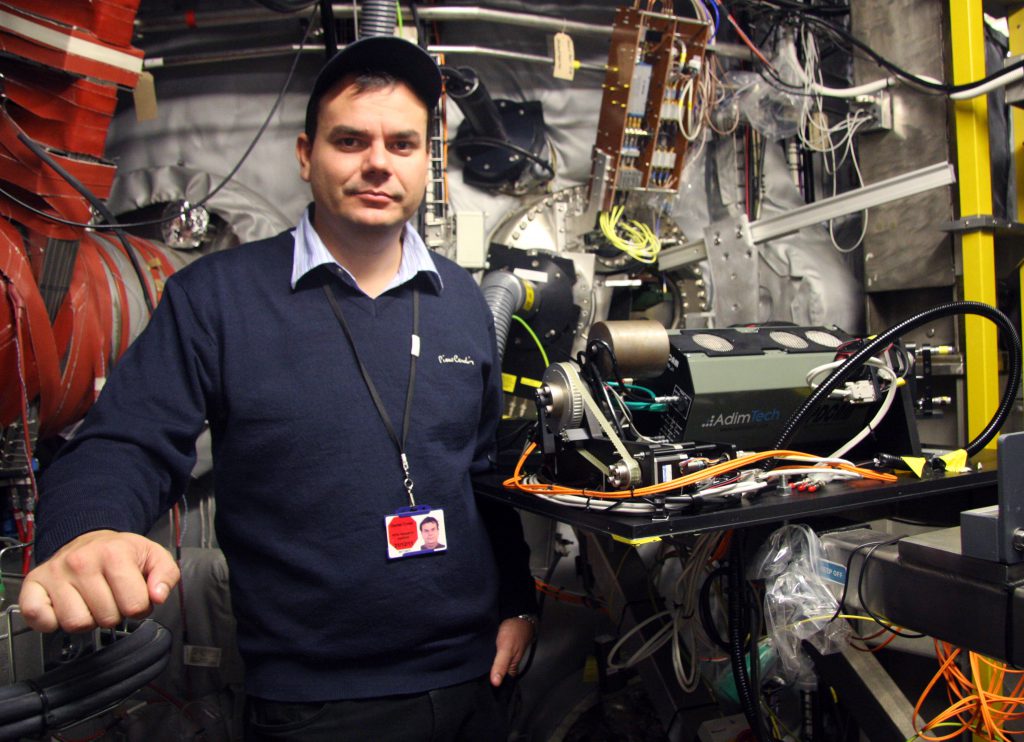
EUROfusion researcher: Daniel Dunai – Hungary
Dunai’s team developed an improved beam emission spectroscopy diagnostics for MAST Upgrade in collaboration with University of York and the CCFE team, to give insights in turbulence in the core of the plasma and in instabilities at its edge. “I hope there will be physics surprises with the new machine, and that our diagnostic will help understand them. It is always exciting to get fresh data right after the tokamak discharge. I hope that many young scientists will get to experience that now at MAST Upgrade.”
Getting ready for experiments
First plasma achieved and applauded – now what? UKAEA’s physicists and engineers are already working to get MAST Upgrade ready for its first experimental campaign.
COVID-19 lockdowns mean that, at least for now, most of the research will have to be done remotely. Over the past half year, UKAEA has gathered a lot of experience with remote operation of the European flagship tokamak JET at their Culham site. Even so, researchers look forward to visiting in person someday. Even coordinator Sara Moradi has been bitten by the bug: “I hope they’ll allow me to come visit the operation of MAST Upgrade at some point. Sitting in the pilot seat at JET, crunching enormous amounts of data and solving unexpected surprises in the 20 minutes between plasma discharges – I miss it!”
If all goes according to plan, MAST Upgrade will run for 10 experimental days in December, with more to come in 2021. A further enhancement campaign in 2023 will be supported by EUROfusion with a programme worth €1.43 million. The planned enhancements include extra neutral beam heating, control upgrades to tame the seething plasma, and a cryoplant to cool away the resulting increased heat load on the divertor.
